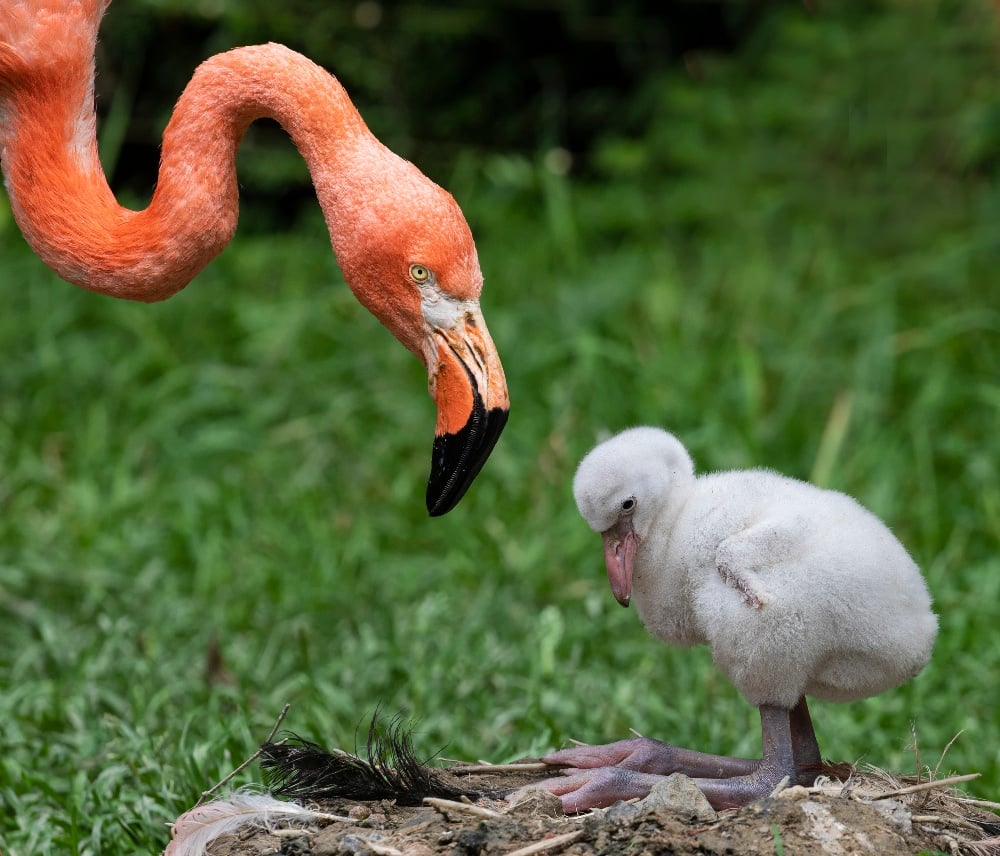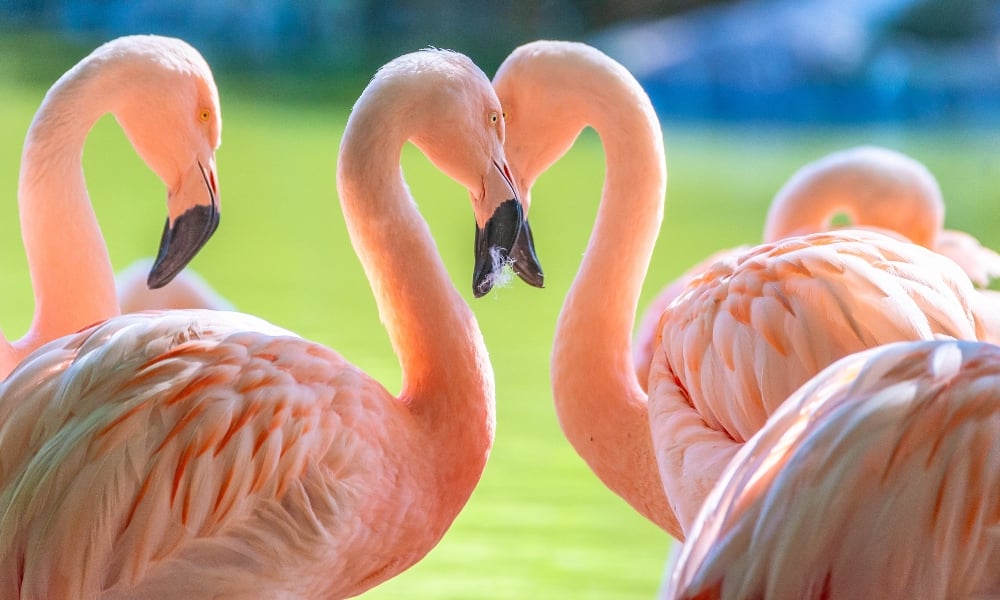Estimated reading time: 4 minutes
At the San Diego Zoo Safari Park, two male flamingos have embraced parenthood by adopting a chick. This story challenges our perceptions of family in the animal kingdom, demonstrating that love and care can emerge from unexpected places.
A Unique Parenting Journey
The stars of our story are two male flamingos in their 40s, belonging to the lesser flamingo species. Their journey into parenthood began when they sat on a dummy egg, showcasing their potential as parents. Observing their dedication, the zookeepers entrusted them with a real egg, marking the start of their parenting journey.
Transitioning from a dummy egg to a real one was a significant step, reflecting the trust the zookeepers placed in these flamingos. The real egg became the center of their world as they took turns keeping it warm and safe. This act of brooding fostered a bond between the parents and their chick, culminating in the hatching of a healthy chick.
The zookeepers played a crucial role in this story. They decided to give the flamingo pair a real egg after observing their behavior. Their support was vital to the success of this parenting journey, allowing the flamingos to raise the chick and providing insights into animal behavior and family dynamics.

The Science of Flamingo Parenting
Flamingos feed their young with crop milk, a nutrient-rich substance from their digestive tract. Both male and female flamingos can produce crop milk, enabling both parents to nourish their young.
Feeding a flamingo chick is a collaborative effort. Both parents produce crop milk, and even other flamingos can assist in feeding the chick, ensuring it receives the necessary nourishment. The flamingo dads at the zoo have mastered their feeding techniques, taking turns to care for the chick.
Brooding is essential for flamingo parenting, involving keeping the egg or chick warm and safe. The flamingo dads shared this responsibility, taking turns to ensure the chick’s comfort. This act of brooding strengthened the bond between the parents and their chick.
The Lesser Flamingo Species
Lesser flamingos inhabit sub-Saharan Africa and western India, where shallow lakes and lagoons provide food and nesting sites. Understanding their habitat helps us learn about their behavior.
While these flamingos thrive in captivity, they face threats in the wild, such as habitat loss and pollution. Conservation efforts are crucial to protect this species, with zoos like the San Diego Zoo Safari Park playing a vital role.
Lesser flamingos are known for their pink color and social behavior. Their color comes from their diet, which includes algae and small crustaceans. They use their beaks to filter food from the water, a skill requiring precision.
The Broader Implications
The story of the flamingo dads challenges traditional gender roles in the animal world, showing us that nature is adaptable. It prompts us to rethink our ideas about family dynamics.
The success of these flamingo dads teaches us about inclusivity and the diverse forms family can take. It reminds us that love and care are not limited by gender, encouraging us to celebrate diverse families.
Nature is full of surprises, and this story highlights the beauty of diversity. It reminds us to appreciate the differences that enrich our world. The success of the flamingo dads exemplifies nature’s resilience.
Community Reactions and Impact
The story of the gay flamingo dads has captured many hearts, sparking positive reactions on social media. People have shared the story and celebrated the flamingo dads’ success.
This event provides an educational opportunity. Zoos and conservationists can use this story to engage the public in discussions about animal behavior. Educational programs can highlight the unique traits of flamingos and the challenges they face.
The story of these flamingo dads inspires change, encouraging us to look beyond stereotypes and appreciate the diversity of life on Earth. By celebrating their success, we can inspire others to value the unique qualities of each individual.
More Stories

